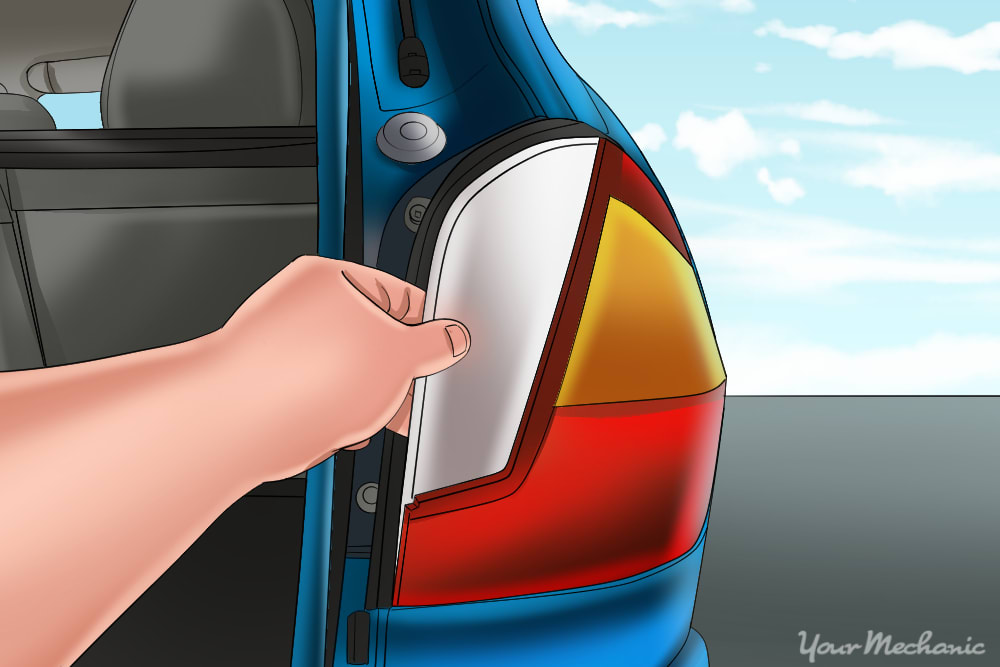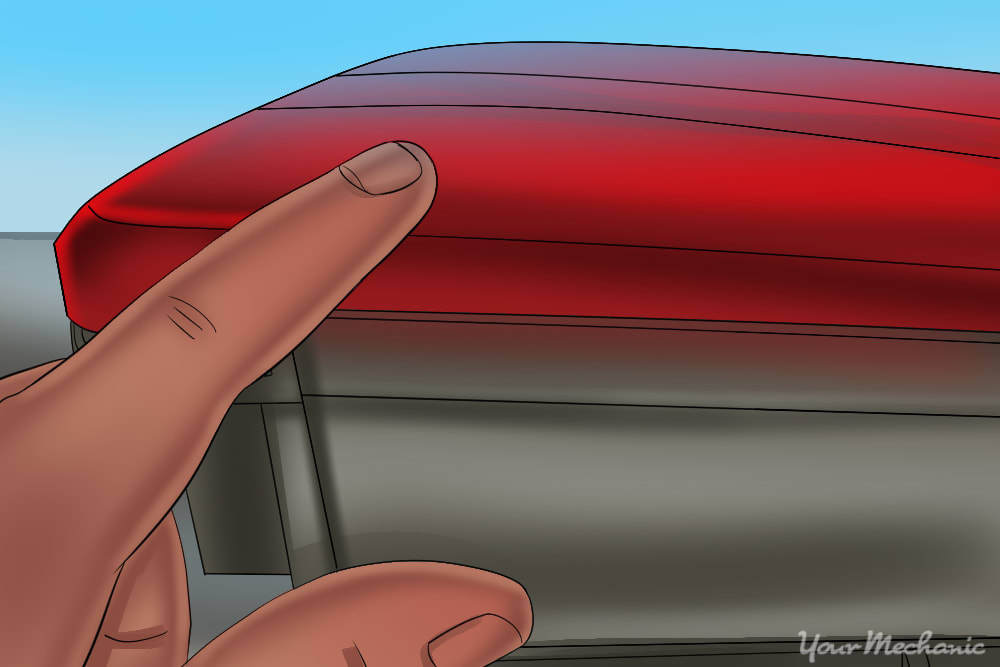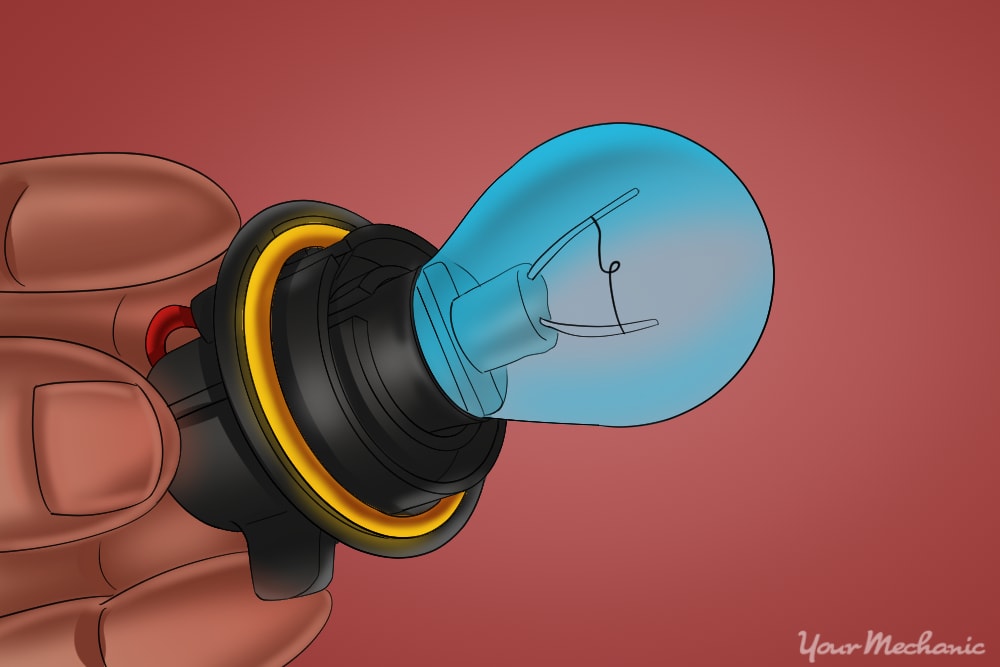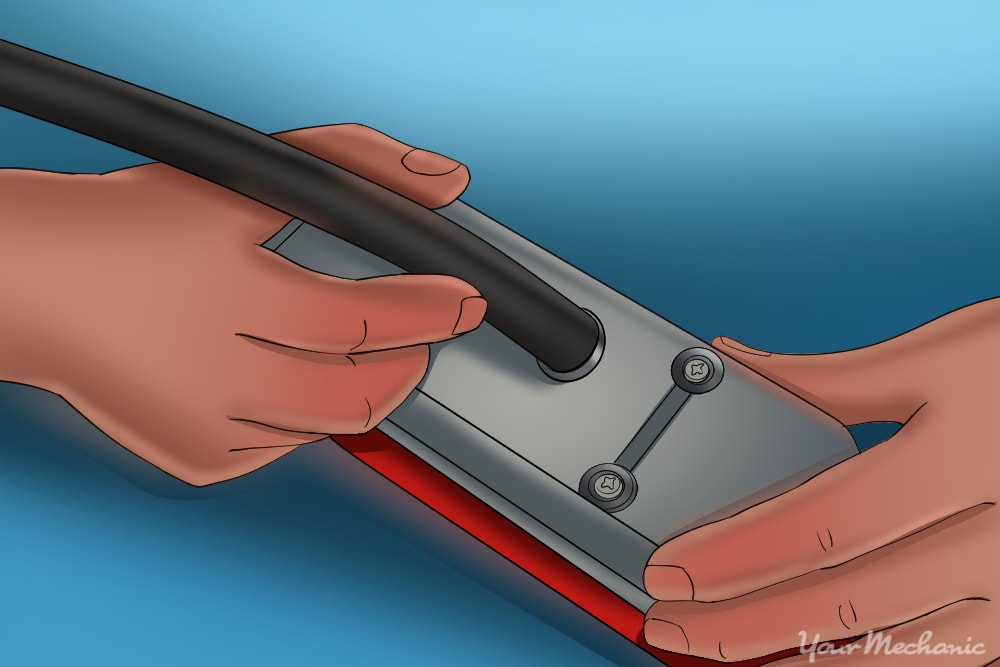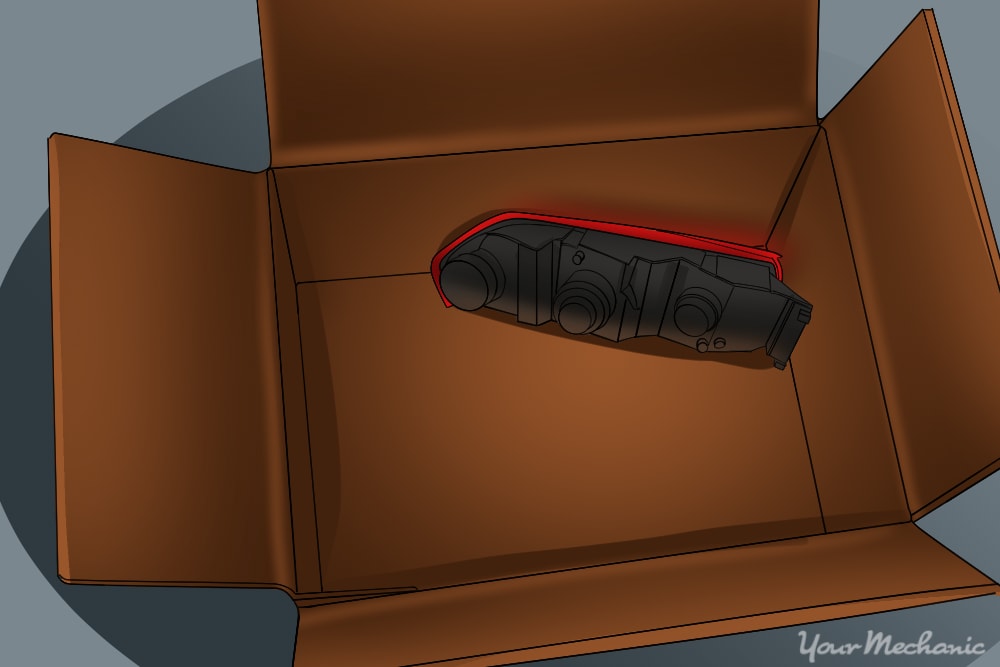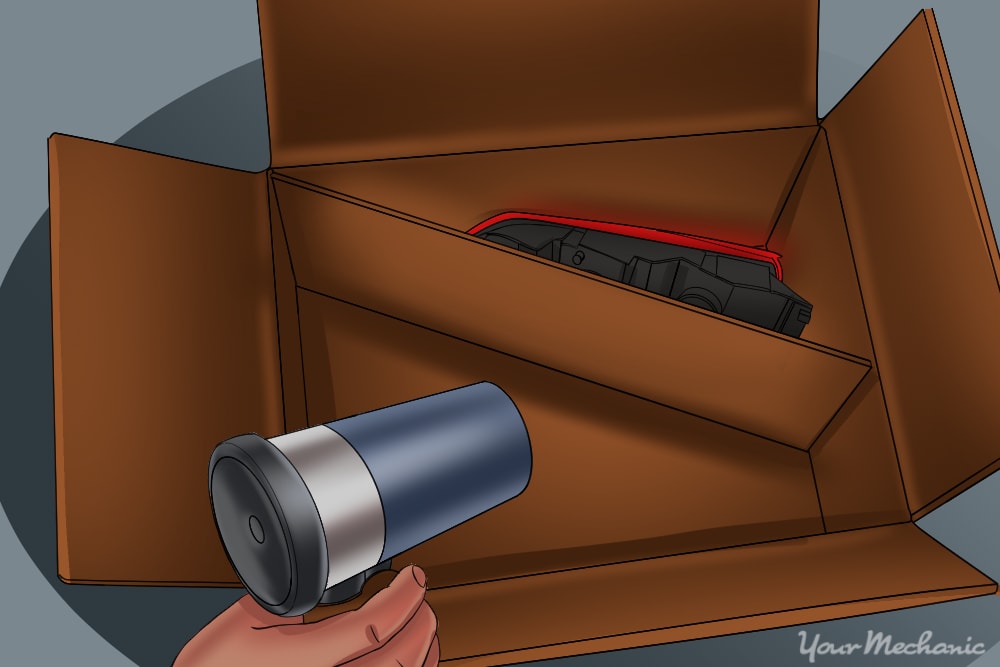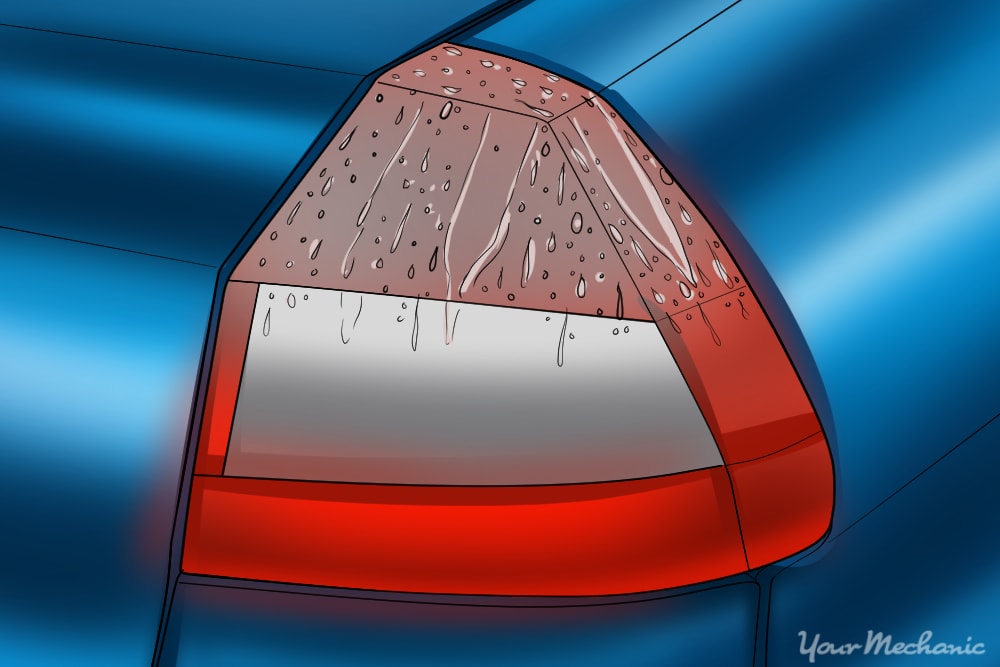

Once the sun sets, our tail lights are used to alert drivers behind us of our presence on the road. However, one of the most frustrating situations a driver can face is when those lights don't work as well as they should. Typically, these problems are related to condensation inside the light housing. It's extremely rare for water or condensation to find its way inside of a tail light, but it does happen occasionally.
Whether it's due to a broken seal or a crack in the tail light itself, condensation inside of a tail light can prematurely wear out the light, burn the bulb and make the light useless. The most common source of water leaking inside of a tail light is when the seal that is designed to protect the interior parts from outside elements breaks, allowing water or condensation to form on the inside of the light.
Part 1 of 1: Removing water from the tail light
Materials Needed
- Boxed end wrench or ratchet wrench
- Flashlight
- Heat gun or hair dryer
- Marker
- Needle nose pliers
- Replacement tail light seal
- Replacement light bulb
- Safety equipment (safety glasses & gloves)
- Screwdrivers (flat and Phillips head)
- Square cardboard box and a flat piece of cardboard the same width as the box
- Waterproof silicone
Step 1: Disconnect the vehicle's battery. Before removing any parts, locate the vehicle's battery and disconnect the positive and negative battery cables.
- Note: This step should always be the first thing you do when you work on any vehicle.
Step 2: Remove the tail light. To remove the light, follow the exact steps listed in your vehicle service manual.
The instructions listed below are general steps for removing the tail light on most vehicles:
Remove any covers that are behind the light in question.
Remove the electrical harness or light bulb "pigtail" from the light.
Remove any clips or bolts that are securing the light to the vehicle. To remove these clips, use a pair of needle nose pliers and press down or pull up on the clip depending on the location of the attachment.
Step 3: Remove the tail light from the vehicle. Once the clips or bolts have been disconnected from the light, you'll need to remove it from the vehicle.
Simply pull the light with two hands, making sure that any electrical harnesses have been removed from the light housing.
Step 4: Remove the light bulb. After the tail light has been removed from the vehicle, you'll need to remove the light bulb inside.
To accomplish this step, follow the instructions listed in your vehicle service manual.
Step 5: Look for the source of the leak. The image above shows the location of the seal between the outer cover and the inner cover.
This seal tends to wear out due to exposure to elements such as sun, hot weather or cold weather climates.
The other source of the leak may be coming from the light bulb itself. In the image above, you can see an orange O-Ring, which is pressed inside the housing where the light bulb inserts to the tail light.
Sometimes this O-Ring will be pinched, frayed or damaged, which causes water to seep into the tail light. If the seal is damaged, you need to purchase a new light bulb and O-Ring and reinstall.
Step 6: Fill the light housing with water. Once all electrical components have been removed from the tail light, a good way to find the source of the leak is to fill it with water and pressure test the housing.
Fill the light housing with water, and wipe all residual water from the outside edges (especially where the seal is located). Using either an air hose connection or your mouth, blow air into the housing and look for air bubbles or water coming from the seals.
In the image above, you can see that bubbles are being forced from the seal. Once you find the area that is leaking, mark the starting and ending locations with a marker. This will tell you where to apply caulking to seal the leaking gasket.
Step 7: Dry the inside of the tail light. The best method to remove condensation from the inside of a tail light is the indirect drying method.
Put the tail light in a cardboard box with a top. Refer to the image above for an example of this setup.
Basically, all you want to do is place the tail light inside of a cardboard box with the open hole where the light bulb is inserted facing towards the back.
Once the light is inside the box, cut a round hole the same diameter as the end of a heat gun or hair dryer on the other side of the cardboard box. Insert the tip of the heat gun through the hole.
You don't want to have direct heat on the tail light, as the plastic housing may melt. To avoid this, place a piece of cardboard or heavy paper in between the light and the heat gun. Refer to the image above.
Once everything is set in place, turn your heat gun or hair dryer to the lowest setting. Close the lid of the box and place a small piece of tape over the lid. After running it for 5 to 10 minutes, check the tail light to see if the condensation has been removed. If not, wait a few minutes more, but do not let the heat gun run for more than 20 minutes.
Step 8: Repair the leak. Once the tail light has been cleared of condensation, you'll have to decide how to repair the damaged seal.
Most car owners will choose to use a waterproof caulking compound to seal the gasket. Others decide to take the headlight or tail light completely apart and replace the entire seal.
The method for completing this step will vary based on the materials you use. However, if you're using a waterproof silicone, the instructions are rather simple.
Run a small bead of silicone along the edge of the seal. Using your finger, smooth out the bead and make sure to work the silicone inside the cracks of the gasket or seal. Let the silicone harden overnight.
Step 9: Reinstall the repaired tail light. Simply reverse the installation instructions to reinstall the tail light or follow your service manual instructions.
These are general steps for reinstalling a tail light:
Insert the new light bulb and securely fasten the light bulb to the back of the tail light.
Insert the tail light into the housing.
Tighten all clips or bolts that hold the tail light onto the vehicle.
Secure any electrical harnesses and reinstall any covers that were removed.
If you've read these instructions and still don't feel 100% confident in completing this repair, please contact one of the local ASE certified mechanics from YourMechanic to complete the tail light lens replacement job for you.




